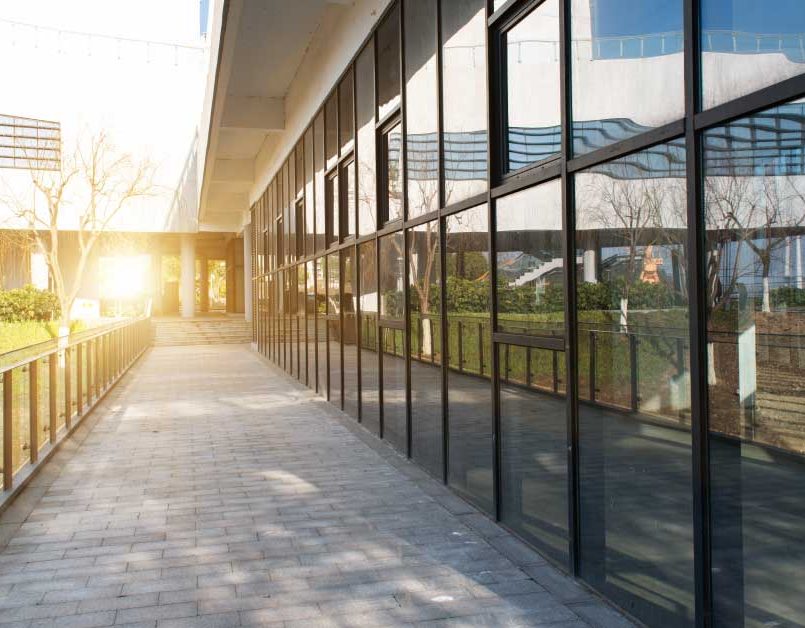The Future of Façade Engineering: Trends and Technologies in Aluminium Curtain Walling
Façade engineering plays a pivotal role in shaping the aesthetics, functionality, and sustainability of modern buildings. As architectural trends evolve and technological innovations emerge, the future of façade engineering is being reshaped by advancements in materials, design concepts, and construction techniques. In this article, we delve into the latest trends and technologies driving the evolution of aluminium curtain walling, a cornerstone of contemporary building façades.
Sustainability and Green Building Initiatives
One of the defining trends in façade engineering is the emphasis on sustainability and eco-friendly design practices. Aluminium curtain walling, known for its recyclability and energy-efficient properties, aligns seamlessly with green building initiatives. Manufacturers are increasingly incorporating sustainable materials and production methods, such as recycled aluminium and low-emissivity glass, to reduce environmental impact and enhance energy performance.
Integrated Building Systems
The integration of building systems is another key trend shaping the future of façade engineering. Aluminium curtain walling is evolving beyond its traditional role as a passive envelope system to become an integral component of smart buildings. Integrated façade systems incorporate advanced technologies, such as solar photovoltaics, dynamic shading systems, and building automation controls, to optimize energy usage, indoor comfort, and occupant productivity.
Parametric Design and Digital Fabrication
Advancements in computational design and digital fabrication are revolutionizing the way aluminium curtain walling is conceptualized and constructed. Parametric design tools enable architects to generate complex geometries and intricate façade patterns with unprecedented precision and efficiency. Digital fabrication technologies, such as robotic assembly and 3D printing, offer new possibilities for customization and mass customization, allowing for the creation of bespoke curtain walling solutions tailored to specific project requirements.
Biophilic Design and Wellness
Biophilic design, which seeks to incorporate elements of nature into the built environment, is gaining prominence in façade engineering. Aluminium curtain walling can facilitate biophilic design strategies by integrating greenery, natural light, and views of the outdoors into building façades. These biophilic elements not only enhance aesthetic appeal but also promote occupant well-being, productivity, and connection to the natural world.
Adaptive and Responsive Façades
The concept of adaptive and responsive façades is redefining the relationship between buildings and their surroundings. Aluminium curtain walling systems equipped with sensors, actuators, and adaptive controls can dynamically adjust their performance in response to environmental conditions, occupancy patterns, and user preferences. These responsive façades optimize thermal comfort, daylighting, and energy efficiency while offering architects greater flexibility in design expression.
Conclusion
As we look to the future of façade engineering, aluminium curtain walling remains at the forefront of innovation and sustainability. By embracing emerging trends and technologies, such as sustainability initiatives, integrated building systems, parametric design, biophilic elements, and adaptive façade solutions, architects and engineers can create buildings that are not only visually stunning but also environmentally responsible and occupant-centric.
FAQs
- What are the key trends shaping the future of façade engineering? The future of façade engineering is influenced by trends such as sustainability, integrated building systems, parametric design, biophilic elements, and adaptive façades, among others.
- How does aluminium curtain walling contribute to sustainability? Aluminium curtain walling is recyclable and energy-efficient, making it a sustainable choice for building façades. Manufacturers are incorporating recycled materials and green building practices to further enhance its environmental performance.
- What role does digital fabrication play in the construction of aluminium curtain walling? Digital fabrication technologies enable architects to create complex geometries and customized designs with precision and efficiency. Robotic assembly and 3D printing are examples of digital fabrication methods used in the production of aluminium curtain walling.
- How do adaptive façades improve building performance? Adaptive façades equipped with sensors and actuators can dynamically adjust their properties in response to environmental conditions and user preferences. These responsive systems optimize energy usage, thermal comfort, and daylighting, enhancing overall building performance.
- What are the benefits of incorporating biophilic elements into aluminium curtain walling? Biophilic design elements, such as greenery and natural light, promote occupant well-being, productivity, and connection to nature. By integrating these elements into aluminium curtain walling, architects can create healthier and more inviting indoor environments.
- How can architects and engineers stay updated on the latest trends in façade engineering? Staying informed about advancements in materials, technologies, and design concepts is essential for professionals in the field of façade engineering. Attending industry conferences, participating in continuing education programs, and networking with peers are effective ways to stay abreast of the latest trends and innovations.





